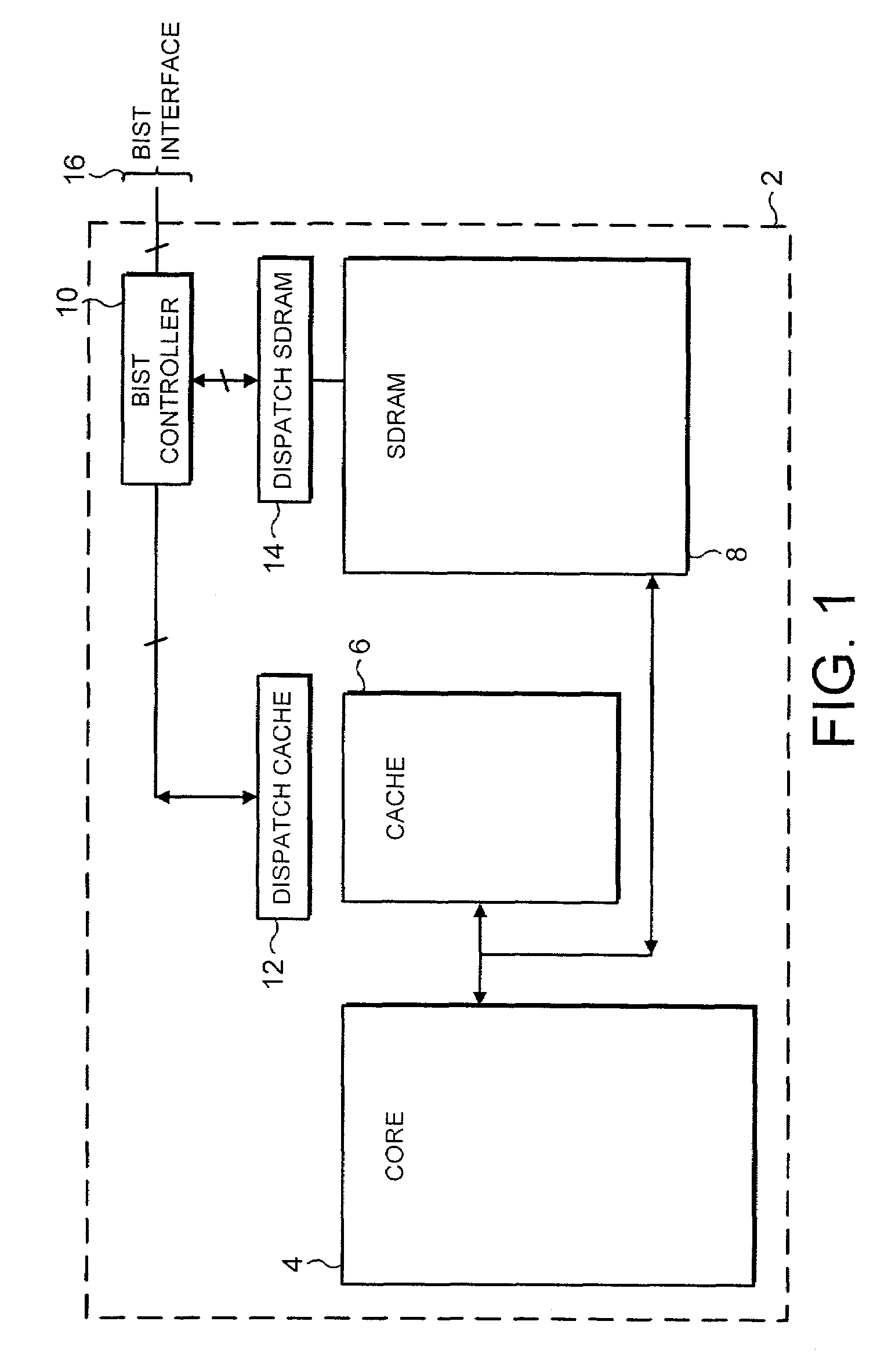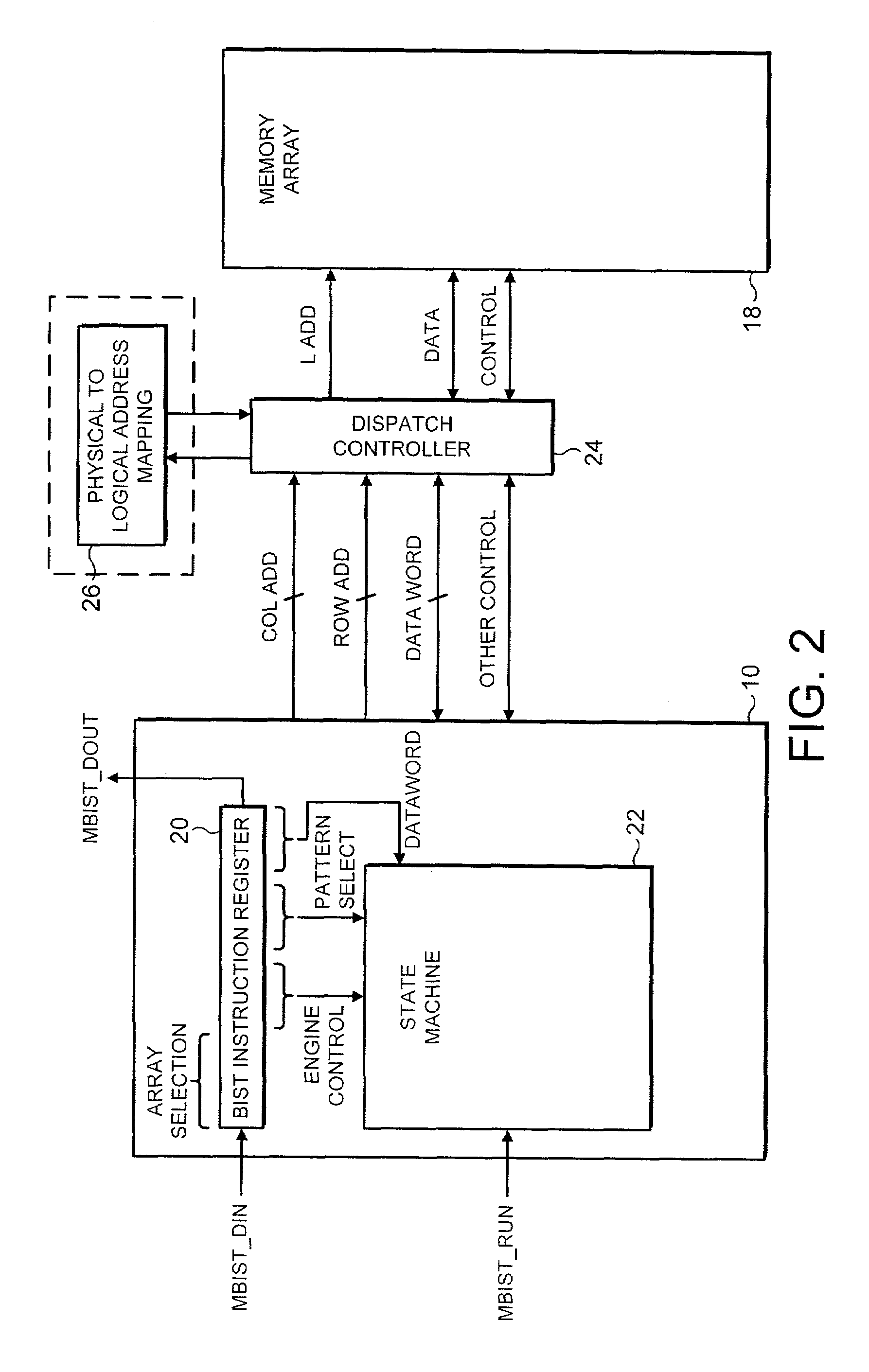Method and apparatus for memory self testing
a memory and self-testing technology, applied in the field of data processing systems, can solve the problems of increasing the defect density of these memories, and the test methodology adopted by one manufacturer may well not work well for another manufacturer, so as to simplify the interface, different test methodologies, and different designs
- Summary
- Abstract
- Description
- Claims
- Application Information
AI Technical Summary
Benefits of technology
Problems solved by technology
Method used
Image
Examples
Embodiment Construction
[0049]FIG. 1 shows an integrated circuit 2 incorporating a processor core 4, a cache memory 6 and an RAM memory 8 (in this example SDRAM). It will be appreciated that such an integrated circuit 2 will typically include many more circuit elements, but these have been omitted from this drawing for the sake of simplicity and clarity.
[0050]A self-test controller 10 is provided on the integrated circuit 2 and communicates with each of the cache memory 6 and the SDRAM memory 8 by a respective dispatch circuit 12, 14. These dispatch circuits act as interface circuits between the self-test controller 10 and the respective memories. Thus, generic memory test driving signals produced by the self-test controller can be re-mapped to logical addresses and adjusted in value and timing to the requirements of the different memories without a need to change the fundamental design of the self-test controller 10.
[0051]It will also be seen that the self-test controller 10 includes a self-test interface...
PUM
 Login to View More
Login to View More Abstract
Description
Claims
Application Information
 Login to View More
Login to View More - Generate Ideas
- Intellectual Property
- Life Sciences
- Materials
- Tech Scout
- Unparalleled Data Quality
- Higher Quality Content
- 60% Fewer Hallucinations
Browse by: Latest US Patents, China's latest patents, Technical Efficacy Thesaurus, Application Domain, Technology Topic, Popular Technical Reports.
© 2025 PatSnap. All rights reserved.Legal|Privacy policy|Modern Slavery Act Transparency Statement|Sitemap|About US| Contact US: help@patsnap.com



